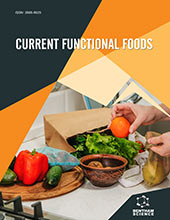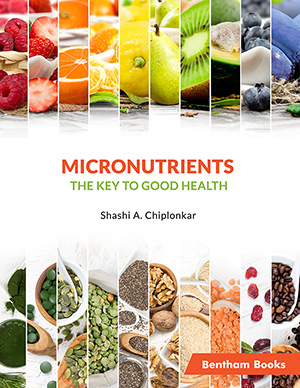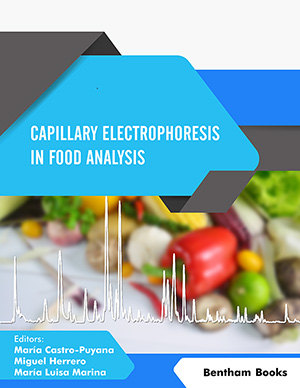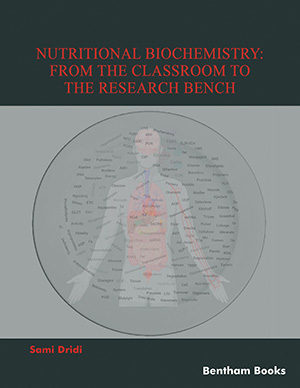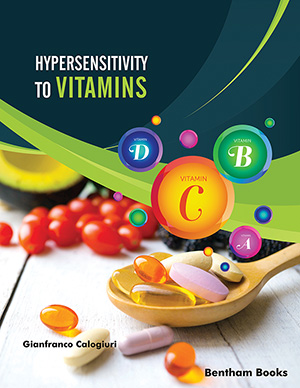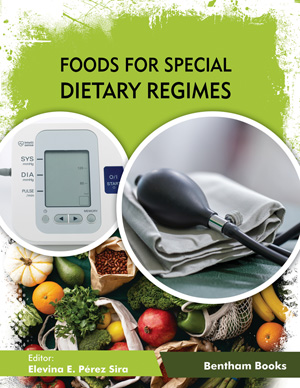[1]
WHO WHO Traditional Medicine Strategy 2014-2023. World Health Organization: Geneva, Switzerland 2013.
[2]
Schepetkin IA, Khlebnikov AI, Kwon BS. Medical drugs from humus matter: focus on mumie. Drug Dev Res 2002; 57: 140-59.
[3]
Agarwal SP, Khanna R, Karmarkar R, Anwer M, Khar RK. Shilajit: A review. Phytother Res 2007; 21(5): 401-5.
[4]
Wilson E, Rajamanickam GV, Dubey GP, et al. Review on Shilajit used in traditional Indian medicine. J Ethnopharmacol 2011; 136: 1-9.
[5]
Ghosal S. Chemistry of Shilajit, an immunomodulatory Ayurvedic Rasayana. Pure Appl Chem 1990; 62: 1285-8.
[6]
Khanna R, Witt M, Anwer MK, Agarwal SP, Koch BP. Spectroscopic characterization of fulvic acids extracted from the rock exudate Shilajit. . Org Geochem 2008; 39: 1719-24.
[7]
Stohs SJ. Safety and efficacy of shilajit (mumie, moomiyo). Phytother Res 2014; 28: 475-9.
[8]
Garedew A, Feist M, Schmolz E, Lamprecht I. Thermal analysis of mumiyo, the legendary folk remedy from the Himalaya region. Thermochim Acta 2004; 417: 301-9.
[9]
Frolova LN, Kiseleva TL. Chemical composition of mumijo and methods for determining its authenticity and quality (a review). Pharm Chem J 1996; 30: 543-7.
[10]
Angmo K, Adhikari BS, Rawat GS. Changing aspects of traditional healthcare system in Western Ladakh, India. J Ethnopharmacol 2012; 143: 621-30.
[11]
Bhavsar SK, Thaker AM, Malik JK. Shilajit.In: Gupta RC, Ed Nutraceuticals: Efficacy, Safety and Toxicity. 1st ed. Academic Press: New York 2016; pp. 707-16.
[12]
Chopra RN, Chopra IC, Handa KL, Kapur LD. Chopra’s Indigenous Drugs of India. 1st ed. Academic Publishers: Calcutta, India 1958.
[13]
Tiwari VP, Tiwari KC, Joshi PJ. An interpretation of Ayurvedika findings on Shilajit. J Res Indigenous Med 1973; 8: 57.
[14]
Ghosal S. Shilajit: Its origin and vital significance. In: Mukherjee B, Ed.Traditional Medicine. Oxford - IBH: New Delhi 1993; pp. 308-19.
[15]
Sharma RK, Dash B. Charaka Samhita. Chowkhamba Sanskrit Series Office: Varanasi, India 2000.
[16]
Thiyagarajan R, Sunderrajan A. Gunapadam Thathu Jeeva Vaguppu. 4th ed. Directorate of Indian Medicine and Homeopathy: Chennai, India, 1992.
[17]
Ghosal S, Lal J, Singh SK. The core structure of Shilajit humus. Soil Biol Biochem 1991; 23: 673-80.
[18]
Gurmet P. Sowa-Rigpa: Himalayan art of healing. Indian J Tradit Knowl 2004; 3: 212-8.
[19]
Ghosal S. Shilajit in Perspective. 1st ed. Alpha Science International Limited: Oxford, United Kingdom 2006.
[20]
Pant K, Gupta P, Damania P, et al. Mineral pitch induces apoptosis and inhibits proliferation via modulating reactive oxygen species in hepatic cancer cells. BMC Complement Altern Med 2016; 16: 148.
[21]
Shahrokhi N, Keshavarzi Z, Khaksari M. Ulcer healing activity of mumijo aqueous extract against acetic acid induced gastric ulcer in rats. J Pharm Bioallied Sci 2015; 7: 56-9.
[22]
Hemadri K. Discovery of gomutra silajit from South India. Anc Sci Life 1987; 8: 104.
[23]
Jaiswal AK, Bhattacharya SK. Effects of Shilajit on memory, anxiety and brain monoamines in rats. Indian J Pharmacol 1992; 24: 12-7.
[24]
Bhattacharya SK, Sen AP, Ghosal S. Effect of Shilajit on biogenic free radicals. Phytother Res 1995; 9: 56-9.
[25]
de Melo BA, Motta FL, Santana MH. Humic acids: Structural properties and multiple functionalities for novel technological developments. Mater Sci Eng C Mater Biol Appl 2016; 62: 967-74.
[26]
Lal VK, Panday KK, Kapoor ML. Literary support to the vegetable origin of Shilajit. Anc Sci Life 1988; 7: 145-8.
[27]
Mittal P, Kaushik D, Gupta V, Bansal P, Khokra S. Therapeutic potentials of Shilajit rasayana- A review. Int J Pharma Clin Res 2009; 1: 47-9.
[28]
Ghosal S, Singh SK, Kumar Y, et al. Anti-ulcerogenic activity of fulvic acids and 4′-methoxy-6-carbomethoxybiphenyl isolated from shilajit. Phytother Res 1988; 2: 187-91.
[29]
Ghosal S, Lal J, Jaiswal AK, Bhattacharya SK. Effects of Shilajit and its active constituents on learning and memory in rats. Phytother Res 1993; 7: 29-34.
[30]
Mirza MA, Agarwal SP, Rahman MA, et al. Role of humic acid on oral drug delivery of an antiepileptic drug. Drug Dev Ind Pharm 2011; 37: 310-9.
[31]
Tang WW, Zeng GM, Gong JL, et al. Impact of humic/fulvic acid on the removal of heavy metals from aqueous solutions using nanomaterials: A review. Sci Total Environ 2014; 468: 1014-27.
[32]
Lehmann J, Kleber M. The contentious nature of soil organic matter. Nature 2015; 2528: 60-8.
[33]
Stevenson FJ. Humus chemistry: Genesis, composition, reactions. John Wiley & Sons 1994.
[34]
Siddiqui Y, Meon S, Ismail R, Rahmani M, Ali A. In vitro fungicidal activity of humic acid fraction from oil palm compost. Int J Agric Biol 2009; 11: 448-52.
[35]
Khilko SL, Efimova IV, Smirnova OV. Antioxidant properties of humic acids from brown coal. Solid Fuel Chem 2011; 45: 367-71.
[36]
Schepetkin IA, Xie G, Jutila MA, Quinn MT. Complement-fixing activity of fulvic acid from Shilajit and other natural sources. Phytother Res 2009; 23: 373-94.
[37]
Carrasco-Gallardo C, Guzman L, Maccioni RB. Shilajit: A natural phytocomplex with potential procognitive activity. Int J Alzheimers Dis 2012; 2012: 674142.
[38]
Pettit RE. Organic matter, humus, humate, humic acid, fulvic acid and humin: Their importance in soil fertility and plant health. CTI Research 2004.
[39]
Biswas TK, Pandit S, Mondal S, et al. Clinical evaluation of spermatogenic activity of processed Shilajit in oligospermia. Andrologia 2010; 42: 48-56.
[40]
Steinberg CEW, Haitzer M, Bruggemann R, Perminova IV, Yashenko NY, Petrosyan VS. Towards a Quantitative Structure Activity Relationship (QSAR) of dissolved humic substances as detoxifying agents in freshwaters. Int Rev Hydrobiol 2000; 85: 253-66.
[41]
Anwer MK, Agarwal SP, Ali A, Sultana Y. Molecular complexes of aspirin with humic acid extracted from Shilajit and their characterization. J Incl Phenom Macrocycl Chem 2010; 67: 209-15.
[42]
Waksman SA. Humus: Origin, chemical composition, and importance in nature. Williams and Wilkins Co: Baltimore 1938.
[43]
Kononova MM. Soil organic matter Pergamon Press, Inc: Oxford 1966.
[44]
Mao Z, Sun W, Fu L, Luo H, Lai D, Zhou L. Natural dibenzo-α-pyrones and their bioactivities. Molecules 2014; 19: 5088-108.
[45]
Garazd YL, Garazd MM. Natural dibenzo[b,d]Pyran-6-Ones: Structural diversity and biological activity. Chem Nat Compd 2016; 52: 1-18.
[46]
Rodriguez FJ, Schlenger P, Garcia-Valverde M. Monitoring changes in the structure and properties of humic substances following ozonation using UV-Vis, FTIR and 1H NMR techniques. Sci Total Environ 2016; 541: 623-37.
[47]
Ghosal S, Reddy JP, Lal VK, Shilajit I. Chemical constituents. J Pharm Sci 1976; 65: 772-3.
[48]
Schepetkin IA, Khlebnikov AI, Ah SY, et al. Characterization and biological activities of humic substances from mumie. J Agric Food Chem 2003; 51: 5245-54.
[49]
Agarwal SP, Khanna R, Karmarkar R, et al. Physico-chemical, spectral and thermal characterization of Shilajit, a humic substance with medicinal properties. Asian J Chem 2008; 20: 209-17.
[50]
Takeuchi K, Amagase K. Evaluation of gastric ulcerogenic and healing impairment effects of bisphosphonates: Adverse gastric reactions of bisphosphonate. Curr Protoc Toxicol 2012; 21: 21-9.
[51]
Phaechamud T, Charoenteeraboon J, Wetwitayaklung P, Limmatvapirat C, Srichan T. Some biological activities and safety of mineral pitch. Silpakorn Univ Sci Technol 2008; 2: 7-17.
[52]
Ali M, Sahrawat I, Singh O. Phytochemical investigation of Shilajit. Indian J Chem 2004; 43B: 2217-22.
[53]
Kiren Y, Nugroho AE, Hirasawa Y, et al. Mumic acids A-E: New diterpenoids from mumiyo. J Nat Med 2014; 68: 199-205.
[54]
Raju S. PrimaVie. Technical Data Report. Natreon, Inc: New Brunswick, NJ 08901, 2012.
[55]
Yin H, Yang EJ, Park SJ, Han SK. Glycine- and GABA-mimetic actions of Shilajit on the substantia gelatinosa neurons of the trigeminal subnucleus caudalis in mice. Korean J Physiol Pharmacol 2011; 15: 285-9.
[56]
Bhattarai JP, Cho DH, Han SK. Activation of strychnine-sensitive glycine receptors by Shilajit on preoptic hypothalamic neurons of juvenile mice. Chin J Physiol 2016; 59: 39-45.
[57]
Peerzada N, Saramani S, Tariq SA. Silajit. Part II. Determination of metals in Silajit and biological significance of some metals. Sci Int 1999; 11: 79-82.
[58]
Saper RB, Phillips RS, Sehgal A, et al. Lead, mercury, and arsenic in US- and Indian-manufactured ayurvedic medicines sold via the internet. JAMA 2008; 300: 915-23.
[59]
Koch I, Moriarty M, House K, et al. Bioaccessibility of lead and arsenic in traditional Indian medicines. Sci Total Environ 2011; 409: 4545-52.
[60]
Ghosal S. Shilalit: Its origin and significance. Indian J Indig Med 1992; 9: 1-4.
[61]
Aiello A, Fattorusso E, Menna M, et al. Mumijo traditional medicine: fossil deposits from antarctica (chemical composition and beneficial bioactivity). Evid Based Complement Alternat Med 2011; 2011: 738131.
[62]
Kelleher BP, Simpson AJ. Humic substances in soils: Are they really chemically distinct? Environ Sci Technol 2006; 40: 4605-11.
[63]
Ghosal S. The aroma principles of gomutra and karpuragandha Shilajit. Indian J Indig Med 1994; 11: 11-4.
[64]
Joshi GC, Tiwari KC, Pande NK, Pande G. Bryophytes, the source of the origin of Shilajit - a new hypothesis. BMEBR 1994; 15: 106-11.
[65]
Saroya AS. Ethnopharmacology of bryophytes In:. Herbalism, Phytochemistry and Ethnopharmacology. Science Publishers and CRC Press: USA 2011.
[66]
Saroya AS. Regulatory and pharmacological bases of ayurvedic
formulations CRC Press: Boca Raton 2016.
[67]
Guzman-Martinez L, Farias GA, Maccioni RB. Tau oligomers as potential targets for Alzheimer’s diagnosis and novel drugs. Front Neurol 2013; 4: 167.
[68]
Kumar R. Census of mycoflora associated with the Shilajit rocks. Curr Sci 1993; 65: 984-5.
[69]
Islam A, Ghosh R, Banerjee D, Nath P, Mazumder UK, Ghosal S. Biotransformation of 3-hydroxydibenzo-α-pyrone into 3, 8 dihydroxydibenzo-α-pyrone and aminoacyl conjugates by Aspergillus niger isolated from native Shilajit. Electron J Biotechnol 2008; 11: 1-10.
[70]
Costa JL, Paulsrud P, Rikkinen J, Lindblad P. Genetic diversity of Nostoc symbionts endophytically associated with two bryophyte species. Appl Environ Microbiol 2001; 67: 4393-6.
[71]
Doosti F, Dashti S, Tabatabai SM, Hosseinzadeh H. Traditional Chinese and Indian medicine in the treatment of opioid-dependence: A review. Avicenna J Phytomed 2013; 3: 205-15.
[72]
Jung CR, Schepetkin IA, Woo SB, Khlebnikov AI, Kwon BS. Osteoblastic differentiation of mesenchymal stem cells by mumie extract. Drug Dev Res 2002; 57: 122-33.
[73]
Labban NY. Shilajit, a novel regulator of bone/cartilage healing. Doctoral dissertation, Indiana University. Shilajit, a novel regulator of bone/cartilage healing. pp. 197, 2013.
[74]
Rubab I, Routray I, Mahmood A, et al. Mineral pitch stimulates humoral, cellular and innate immune responses in mice. Pharm Biol 2013; 51: 997-1007.
[75]
Shakirov DS. Treatment of infected wounds with Mumie asil in experiment. Exp Surg Anesthes 1969; 6: 36-9.
[76]
Meena H, Pandey HK, Arya MC, Ahmed Z. Shilajit: A panacea for high-altitude problems. Int J Ayurveda 2010; 1: 37-40.
[77]
Bucci LR. Selected herbals and human exercise performance. Am J Clin Nutr 2000; 72(2)(Suppl.): 624S-36S.
[78]
Bhattacharyya S, Pal D, Banerjee D, et al. Shilajit dibenzo-α-pyrones: Mitochondria targeted antioxidants. Pharmacol Online 2009; 2: 690-8.
[79]
Bhattacharyya S, Pal D, Gupta AK, Ganguly P, Majumder UK, Ghosal S. Beneficial effect of processed Shilajit on swimming exercise induced impaired energy status of mice. Pharmacol Online 2009; 1: 817-25.
[80]
Duberley KE, Abramov AY, Chalasani A, Heales SJ, Rahman S, Hargreaves IP. Human neuronal coenzyme Q10 deficiency results in global loss of mitochondrial respiratory chain activity, increased mitochondrial oxidative stress and reversal of ATP synthase activity: implications for pathogenesis and treatment. J Inherit Metab Dis 2013; 36: 63-73.
[81]
Aboul-Fotouh S. Coenzyme Q10 displays antidepressant-like activity with reduction of hippocampal oxidative/nitrosative DNA damage in chronically stressed rats. Pharmacol Biochem Behav 2013; 104: 105-12.
[82]
Ghosal S. Interaction of Shilajit with free radicals. Indian J Chem 1995; 34B: 596-602.
[83]
Tripathi YB, Shukla S, Chaurasia S, Chaturvedi S. Antilipid peroxidative property of Shilajit. Phytother Res 1996; 10: 269-73.
[84]
Musthafa MS, Jawahar Ali AR, Hyder Ali AR, et al. Effect of Shilajit enriched diet on immunity, antioxidants, and disease resistance in Macrobrachium rosenbergii (de Man) against Aeromonas hydrophila. Fish Shellfish Immunol 2016; 57: 293-300.
[85]
Aeschbacher M, Graf C, Scwarzenbach RP, et al. Antioxidant properties of humic substances. Environ Sci Technol 2012; 46: 4916-25.
[86]
Bhaumik S, Chattopadhyay S, Ghosal S. Effect of Shilajit on mouse peritoneal macrophages. Phytother Res 1993; 7: 425-7.
[87]
Agzamov RA, Arifkhanova SI, Vakhidova GA. Mumie as a pathogenetic agent in the treatment of tuberculosis. Probl Tuberk 1988; 7: 49-52.
[88]
Gertsch J, Viveros-Paredes JM, Taylor P. Plant immunostimulants-scientific paradigm or myth? J Ethnopharmacol 2011; 136: 385-91.
[89]
Jayasooriya RG, Dilshara MG, Kang CH, et al. Fulvic acid promotes extracellular anti-cancer mediators from RAW 264.7 cells, causing to cancer cell death in vitro. Int Immunopharmacol 2016; 36: 241-8.
[90]
Enkh-Oyun T, Narangerel B. Results for antibiotic-likeness activity of the mumio against Salmonella spp. Mongolian J Agric Sci 2014; 13: 27-8.
[91]
Mirza MA, Ahmad N, Agarwal SP, Mahmood D, Anwer MK, Iqbal Z. Comparative evaluation of humic substances in oral drug delivery. Results Pharma Sci 2011; 1: 16-26.
[92]
Cagno V, Donalisio M, Civra A, Cagliero C, Rubiolo P, Lembo D. In vitro evaluation of the antiviral properties of Shilajit and investigation of its mechanisms of action. J Ethnopharmacol 2015; 166: 129-34.
[93]
Pant K, Yadav AK, Gupta P, Rathore AS, Nayak B, Venugopal SK. Humic acid inhibits HBV-induced autophagosome formation and induces apoptosis in HBV-transfected Hep G2 cells. Sci Rep 2016; 6: 34496.
[94]
van Rensburg CEJ, Van Straten A, Dekker J. An in vitro investigation of the antimicrobial activity of oxifulvic acid. J Antimicrob Chemother 2000; 46: 853-4.
[95]
Surapaneni DK, Adapa SR, Preeti K, Teja GR, Veeraragavan M, Krishnamurthy S. Shilajit attenuates behavioral symptoms of chronic fatigue syndrome by modulating the hypothalamic-pituitary-adrenal axis and mitochondrial bioenergetics in rats. J Ethnopharmacol 2012; 143: 91-9.
[96]
Kaur S, Kumar P, Kumar D, Kharya MD, Singh N. Parasympathomimetic effect of Shilajit accounts for relaxation of rat corpus cavernosum. Am J Men Health 2013; 7: 119-27.
[97]
Khaksari M, Mahmmodi R, Shahrokhi N, Shabani M, Joukar S, Aqapour M. The effects of Shilajit on brain edema, intracranial pressure and neurologic outcomes following the traumatic brain injury in rat. Iran J Basic Med Sci 2013; 16: 858-64.
[98]
Durg S, Veerapur VP, Thippeswamy BS, Ahamed SM. Antiepileptic and antipsychotic activities of standardized Śilājatu (Shilajit) in experimental animals. Anc Sci Life 2015; 35: 110-7.
[99]
Bansal P, Banerjee S. Effect of Withinia somnifera and shilajit on alcohol addiction in mice. Pharmacogn Mag 2016; 12(Suppl. 2): S121-8.
[100]
Cornejo A, Jimenez JM, Caballero L, Melo F, Maccioni RB. Fulvic acid inhibits aggregation and promotes disassembly of tau fibrils associated with Alzheimer’s disease. J Alzheimers Dis 2011; 27: 143-53.
[101]
Kanikkannan N, Ramarao P, Ghosal S. Shilajit-induced potentiation of the hypoglycemic action of insulin and inhibition of streptozotocin induced diabetes in rats. Phytother Res 1995; 9: 478-81.
[102]
Wanjari MM, Mishra S, Dey YN, Sharma D, Gaidhani SN, Jadhav AD. Antidiabetic activity of Chandraprabha vati- A classical Ayurvedic formulation. J Ayurveda Integr Med 2016; 7: 144-50.
[103]
Trivedi NA, Mazumdar B, Bhatt JD, Hemavathi KG. Effect of shilajit on blood glucose and lipid profile in alloxan-induced diabetic rats. Indian J Pharmacol 2004; 36: 373-6.
[104]
Bhattacharya SK. Shilajit attenuates streptozotocin induced diabetes mellitus and decrease in pancreatic islet superoxide dismutase activity in rats. Phytother Res 1995; 9: 41-4.
[105]
Vivek B, Wilson E, Nithya Devi SV, Velmurugan C, Kannan M. Cardioprotective activity of Shilajit in isoproterenol-induced myocardial infarction in rats: A biochemical and histopathological evaluation. Int J Res Photochem Pharmacol 2011; 1: 28-32.
[106]
Kececi M, Akpolat M, Gulle K, Gencer E, Sahbaz A. Evaluation of preventive effect of Shilajit on radiation-induced apoptosis on ovaries. Arch Gynecol Obstet 2016; 293: 1255-62.
[107]
Pandit S, Biswas S, Jana U, De RK, Mukhopadhyay SC, Biswas TK. Clinical evaluation of purified Shilajit on testosterone levels in healthy volunteers. Andrologia 2016; 48: 570-5.
[108]
Carrasco-Gallardo C, Farias GA, Fuentes P, Crespo F, Maccioni RB. Can nutraceuticals prevent Alzheimer’s disease? Potential therapeutic role of a formulation containing Shilajit and complex B vitamins. Arch Med Res 2012; 43: 699-704.
[109]
Das A, Datta S, Rhea B, et al. The human skeletal muscle transcriptome in response to oral Shilajit supplementation. J Med Food 2016; 19: 701-9.
[110]
Velmurugan C, Vivek B, Wilson E, Bharathi T, Sundaram T. Evaluation of safety profile of black Shilajit after 91 days repeated administration in rats. Asian Pac J Trop Biomed 2012; 2: 210-4.
[111]
Ghosal S, Lata S, Kumar Y. Free radicals of Shilajit humus. Indian J Chem 1996; 34B: 591-5.
[112]
Genuis SJ, Schwalfenberg G, Siy AKJ, Rodushkin I. Toxic element contamination of natural health products and pharmaceutical preparations. PLoS One 2012; 7: e49676.
[113]
Giacomino A, Abollino O, Malandrino M, Karthik M, Murugesan V. Determination and assessment of the contents of essential and potentially toxic elements in Ayurvedic medicine formulations by inductively coupled plasma-optical emission spectrometry. Microchem J 2011; 99: 2-6.
[114]
Park JS, Kim GY, Han K. The spermatogenic and ovogenic effects of chronically administered Shilajit to rats. J Ethnopharmacol 2006; 107: 349-53.
[115]
Schliebs R, Liebmann A, Bhattacharya SK, Kumar A, Ghosal S, Bigl V. Systemic administration of defined extracts from Withania somnifera (Indian Ginseng) and Shilajit differentially affects cholinergic but not glutamatergic and GABAergic markers in rat brain. Neurochem Int 1997; 30: 181-90.
[116]
Goel RK, Banerjee RS, Achrarya SB. Antiulcerogenic and antiinflammatory studies with Shilajit. J Ethnopharmacol 1990; 29: 95-103.
[117]
Ghosal S, Lal J, Singh SK, et al. Mast cell protecting effects of Shilajit and its constituents. Phytother Res 1989; 3: 249-52.
[118]
Bizanov G, Barinova N, Jonauskie I. Adjuvant effect of Shilajit and plant extracts on the immune responses to bovine serum albumin in hens. Cent Eur J Immunol 2012; 37: 91-5.
[119]
Gaikwad NS, Panat AV, Deshpande MS, Ramya K, Khalid PU, Augustine P. Effect of Shilajit on the heart of Daphnia: A preliminary study. J Ayurveda Integr Med 2012; 3: 3-5.
[120]
Joukar S, Najafipour H, Dabiri S, Sheibani M, Sharokhi N. Cardioprotective effect of mumie (Shilajit) on experimentally induced myocardial injury. Cardiovasc Toxicol 2014; 14: 214-21.
[121]
Tiwari P, Ramarao P, Ghosal S. Effects of Shilajit on the development of tolerance to morphine in mice. Phytother Res 2001; 15: 177-9.
[122]
Saxena N, Upendra DN, Raj SK, et al. Modulation of oxidative and antioxidative status in diabetes by Asphaltum panjabinum. Diabetes Care 2003; 26: 2469-70.

 94
94 7
7 1
1









